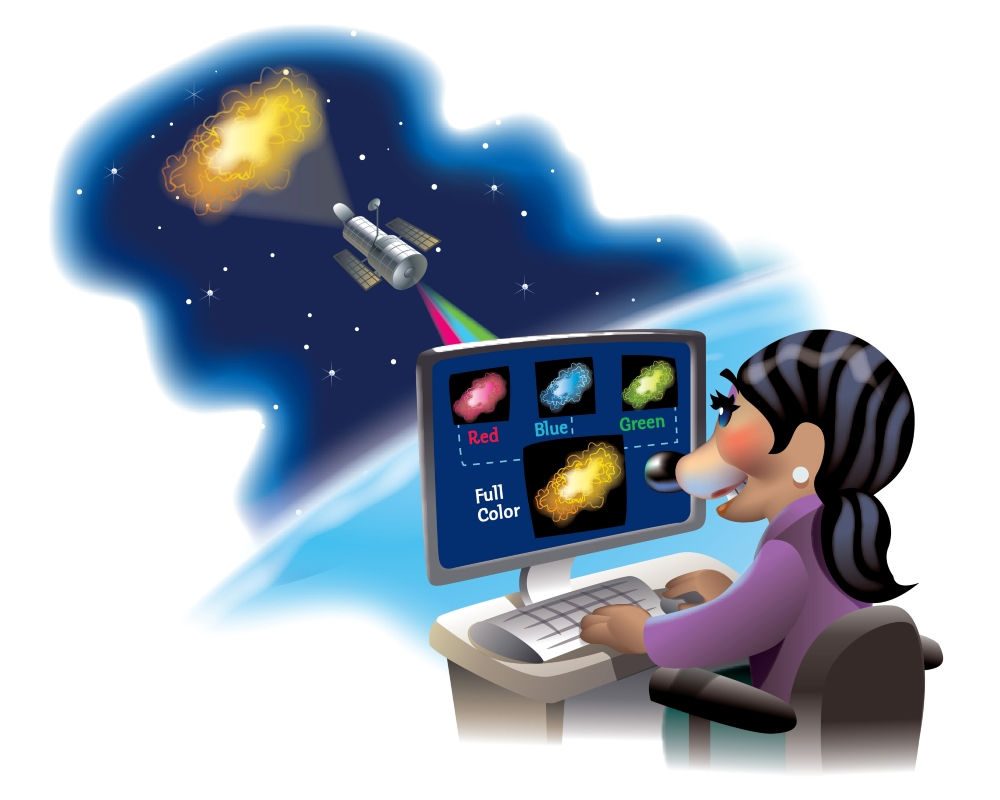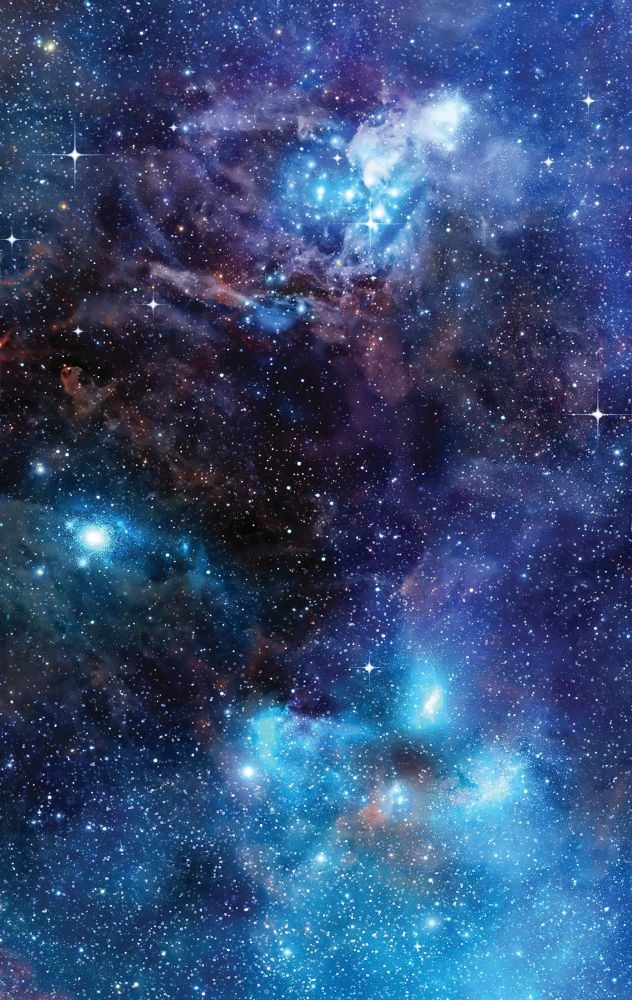By Oksana Love
Sunlight contains lots of wavelengths that are arranged in an electromagnetic spectrum, or different kinds of light that are given off by objects. Humans can only see part of the spectrum, the part we know as visible light. The wavelengths in this part of the spectrum are incredibly small. In fact, tens of thousands of them could fit within an inch!
Different wavelengths produce different colors that we observe. For example, red light has a wavelength of about 700 nanometers (abbreviated nm), and blue light’s wavelength is about 450 nm. The color black, however, absorbs all the visible light, which is why we cannot see anything through it.
Astronomers (people who study stars and space) use the properties of light shining at us from distant objects to make observations about the universe. To help them see, they use color filters. These filters block certain kinds of light while allowing others to reach us. This way, astronomers can observe, take pictures, and study outer space.
In this activity, you can use red- and blue-colored filters to observe and learn how astronomers take beautiful space pictures.
Materials
- White and black paper
- Blue and red markers
- Filters — any red and blue material that you can see through will work, like colored transparency sheets or overlays. If you want, your adult partner can buy blue and red filter sheets online.
- Cell phone camera
- Red and blue grease pencils or crayons (to write/draw on black paper)
- Optional: color printouts of images from space (Nasa Astronomy picture of the day is a great resource)
Procedure
- Draw two small circles on the sheet of white paper. Use your blue marker for one and your red marker for the other.
- Next use the red and blue grease pencils or crayons to draw the same size circles on the sheet of black paper.
- Take a red filter and cover the camera lens of your phone with it. Then take a picture of the circles that you drew on both the white and black paper. Write your observations in the table below.
- Now, take a blue filter and cover the lens of your phone with it. Take a picture of the circles that you drew on the sheets of white and black paper. Write your observations in the table below.
- Draw your own pictures on the two sheets of paper, using the same colors. For more fun, use other shades of crayons! Observe your drawings, and take pictures with the filters. What changes do you notice?
- If you have any images of space, use the filters one at a time to observe differences. Do some features stand out more if you look through the blue or red filter? Which filter shows you a clearer image? Can you use other color filters to make certain colors look brighter? How could this tool be useful to space scientists?
What did you observe?
Write down your observations in the table below for each filter. Hint: What happened with the circles you drew? Did any of the circles disappear? Did any appear brighter?
| Red filter | Blue filter | |
White paper | ||
Black paper |
How does it work? / Where's the chemistry?
Red filters only allow red light to make it through. Since the color white (yes, it’s a color!) contains all colors, red light should reflect from both the red marker and white paper. If your filter could be completely perfect (and filter out 100% of red color), your red circle would have disappeared from the white paper. Since we cannot totally block visible light, we can see both of the circles.
However, background color matters! Looking at the red circle against the black paper should actually make the red color stand out more. This is because the filter blocks all the other energy levels of light (colors) reflected off the paper, making the red easier to see.
Oksana Love is Assistant Professor at the University of North Carolina Asheville.



